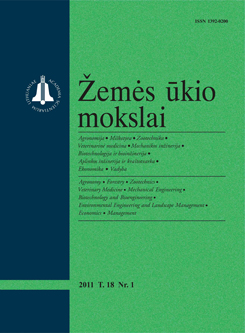Žemės ūkio mokslai / Agricultural Sciences
WHAT?
 ISSN 1392-0200 |
2006 m. Nr. 1.Priedas Using theoretical methods in developing and
managing new rural development policy
There are many different methods and methodologies especially developed for a better targeting of development processes. The scope of their use could vary from family budgeting to the design of the country development strategy. Research results on the development of complex methodologies and their application for policy decision needs show that multivariate data analysis, analytical constructive methods, econometric models as well as hierarchy analysis could be used as a sound complex of instruments for designing a better targeted rural development and support policy based on the LEADER approach.
The paper presents an application of theoretical methods used for agricultural and rural policy development in Latvia: the factor and cluster analyses were used to identify and select territories or community groups with similar development needs and required support intervention levels; the analyticalconstructive methods were employed to design development scenarios for agricultural policy, and the static farm model was used to assess the impact of policy measures and scenarios for different farm groups. By means of a static mathematical model, the economic estimation of farms was produced in different policy scenarios. The evaluation of the methodology adequacy for targeted rural policy development and managment was presented. It is very important to involve the community in policy decision-making processes, and the hierarchy analysis is one of the simplest methods for that purpose, making national policy and support closely linked to regional needs and available and eligible to local actors. Keywords: rural development policy, factor and cluster analysis, analyticalconstructive method, farm simulation method, analytical hierarchy process |
Numeriai:
2012 - T.19 Nr.1 2011 - T.18 Nr.1, Nr.2, Nr.3, Nr.4 2010 - T.17 Nr.1-2, Nr.3-4 2009 - T.16 Nr.1-2, Nr.3-4 2008 - T.15 Nr.1, Nr.2, Nr.3, Nr.4 2007 - T.14 Nr.1, Nr.2, Nr.3, Nr.4, Nr.Priedas 2006 Nr.1, Nr.1.Priedas, Nr.2, Nr.3, Nr.4 2005 Nr.1, Nr.2, Nr.3, Nr.4 2004 Nr.1, Nr.2, Nr.3, Nr.4 2003 Nr.1, Nr.2, Nr.3, Nr.4 2002 Nr.1, Nr.2, Nr.3, Nr.4 2001 Nr.1, Nr.2, Nr.3, Nr.4 |